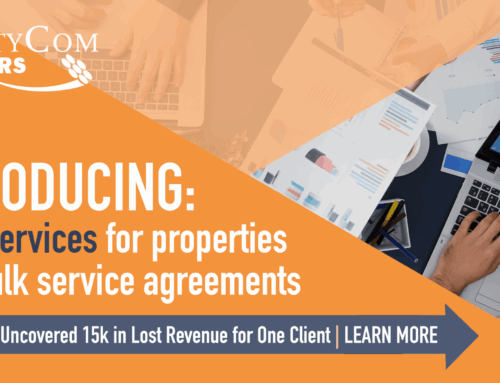By Aaron Nygard
As RealtyCom’s Field Engineer for new construction MDU (multi-dwelling unit) projects in the Northern California region, I manage the telecom infrastructure construction coordination between various service providers. These projects have an average duration of two years, from the time of first engagement with the telecom aspects to the completion of telecom services for the residential units.
One of the challenges that directly impacts these projects is employee turnover (ET) at the organizations I work with. As one can imagine, that kind of ET can have its effect on projects like mine. It’s possible to have one or more of my key construction contacts be part of the employee turnover process.
The notice can be amazingly short – for example, finding out about my contact has moved on when their email bounces back or a message informs me that they are no longer with the company! I have also showed up at a job site and asked to meet my contact, only to be informed that they are no longer employed by the company; and informed on a monthly client call for a particular project that there has been a change in personnel so “please update your contact information.”
According to the U.S. Bureau of Statistics, there is a 21.4% turnover rate in the construction industry. (In the age of COVID-19, that average may substantially change, but that is just speculation until the hard numbers arrive. We are in the early stages.) With a greater than one-in-five possibility for a change-up, I recommend the following three steps to maintain project continuity:
Limit your contacts to a manageable number. Even before I have my pre-con meeting with the developer, general contracting, low voltage subcontractor, and service provider teams, I start the process of reaching out to my project construction contacts to start the communication process. After the pre-con meeting, I can usually narrow the field down even more to who my main contacts will be to properly manage the project to completion.
Once I obtain what I call my “golden contacts”, I get the wheels set in motion with the timelines that I need to meet for the telecom infrastructure to be built out in order for the service providers to be able to bring services into the building on time before TCO (temporary certificate of occupancy) is issued and FMRI (first resident move in).
Keep the Scope of Work clear and up to date. The Scope of Work (SOW) outlines the project and its expected outcome; it also details the part each contractor plays in the project. The methods by which the SOW is achieved may evolve according to the challenges presented. If that’s the case, it’s important the paperwork reflects it. Here’s why: At any time, one of my “golden contacts” may leave the company, being tasked with another phase of the project, or being relocated to a completely new project. When that happens, there is usually a delay between the time I find out and receive my new contact information.
Once I get my new contact’s information, I begin the process of informing them of my scope of work, and where the project has reached as they assume their responsibilities. I will inform them of the items that have been completed and which items will need to be completed to meet the timeline dates. Having this information handy ensures a smooth transition by getting everyone up to speed in order to proceed forward with the project.
Keep connected with contacts who have left. There are sometimes positives when a key contact leaves a company or gets transferred to another project. The construction contact sometimes will refer us to a construction team or a developer for a new project, continuing the communication upon which we heavily rely in this industry to complete the telecom service goals of our MDU projects.
As we speak, another challenge is looming for long-term projects. In the field, I’m finding that Covid-19 is affecting my ability to get things done, and some of my projects are requiring me to fill out Covid-19 wellness check paperwork prior to arriving at the job site. But as far as having communication with project contacts, it is business as usual.




